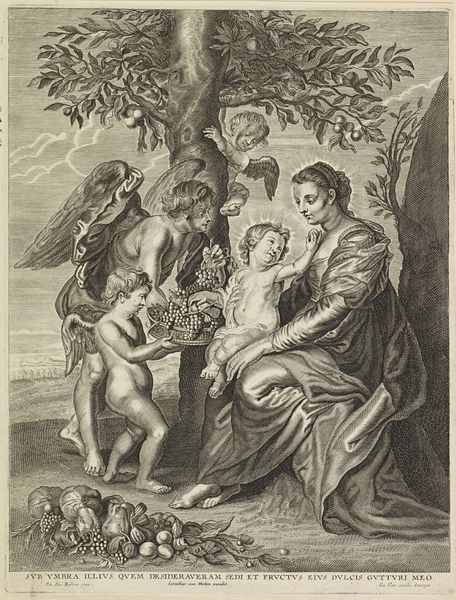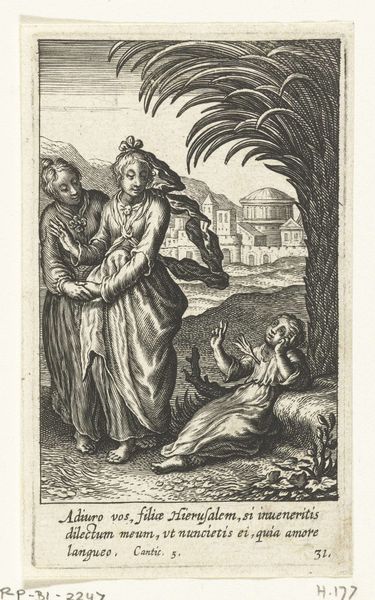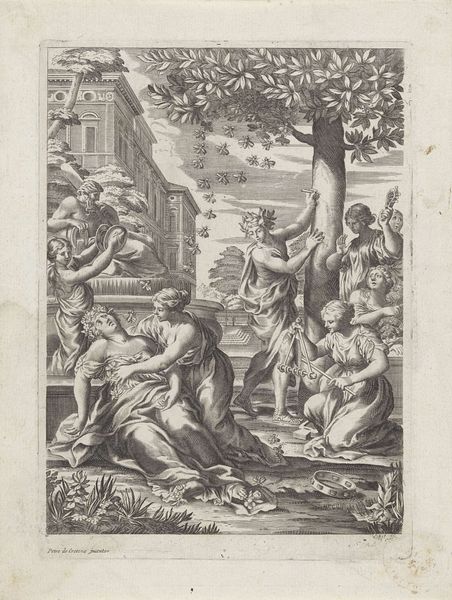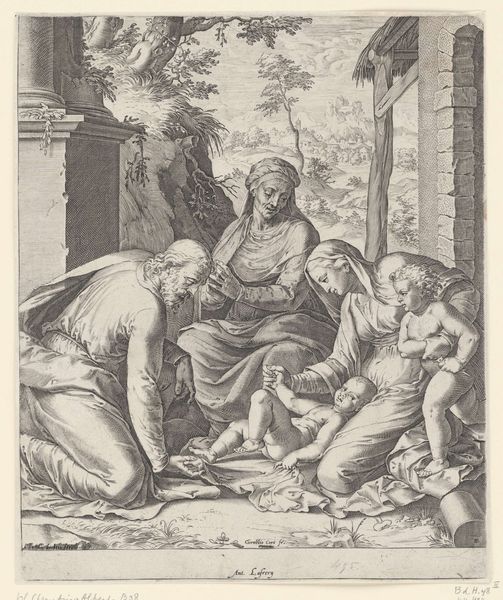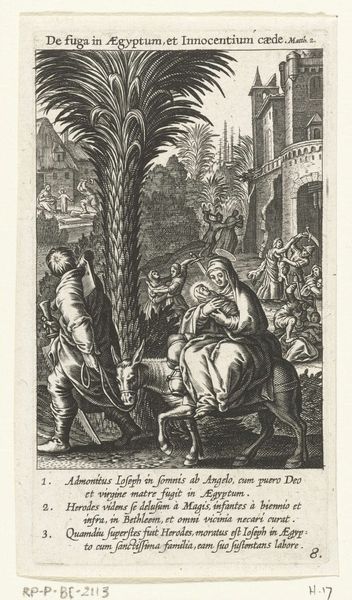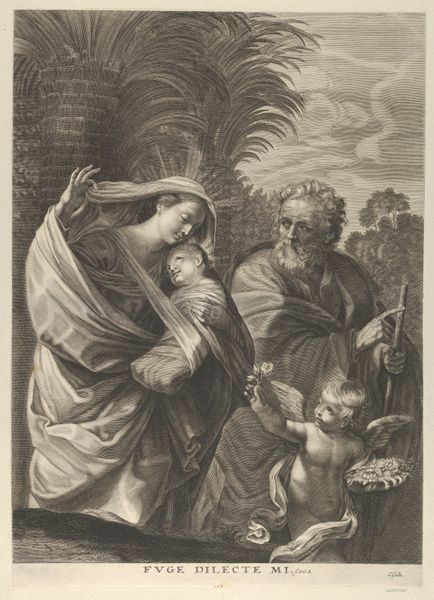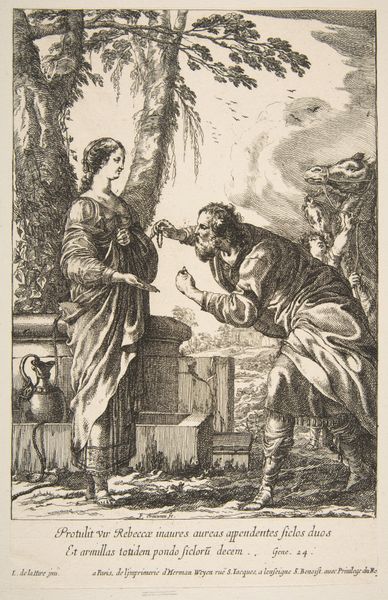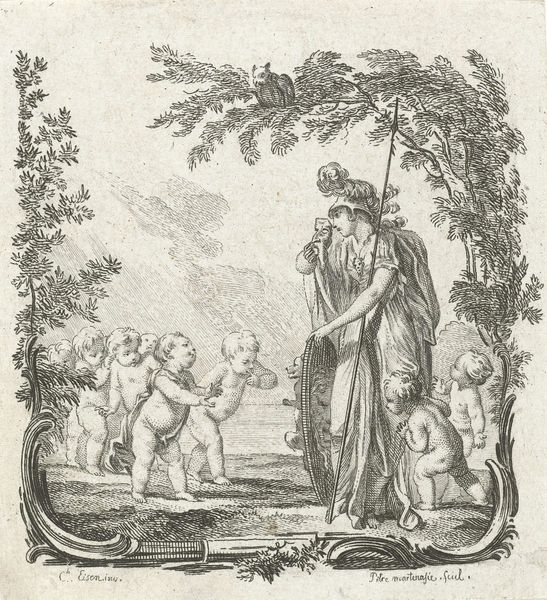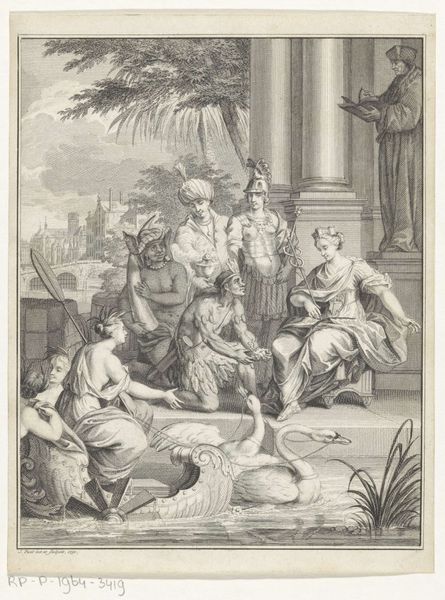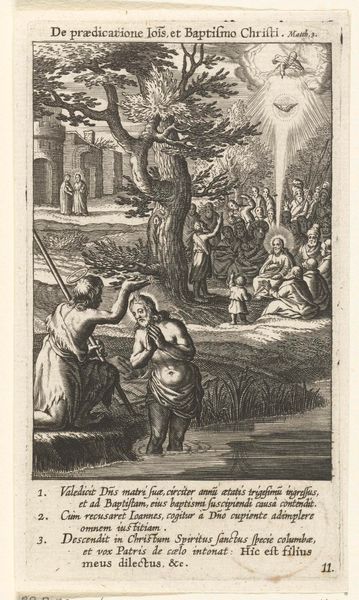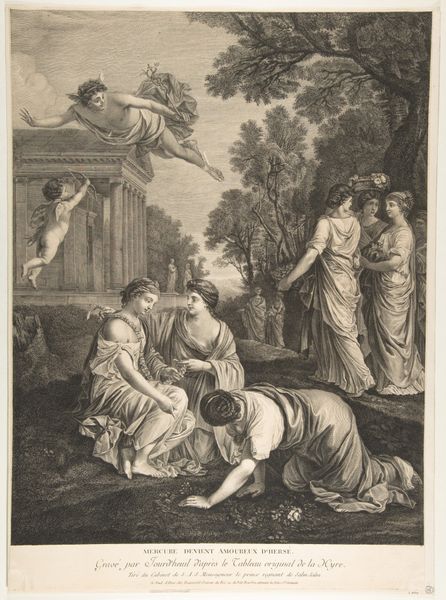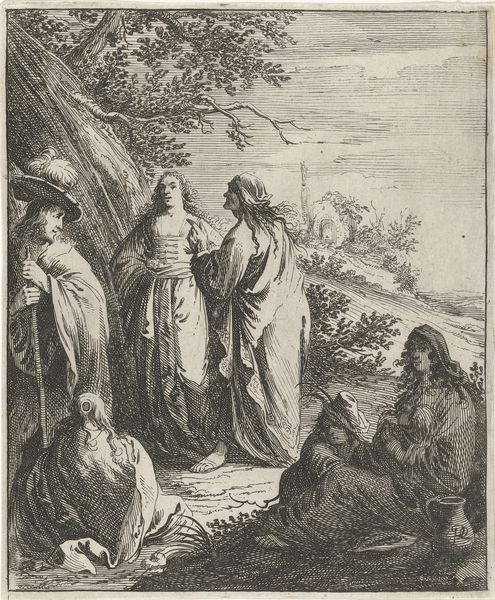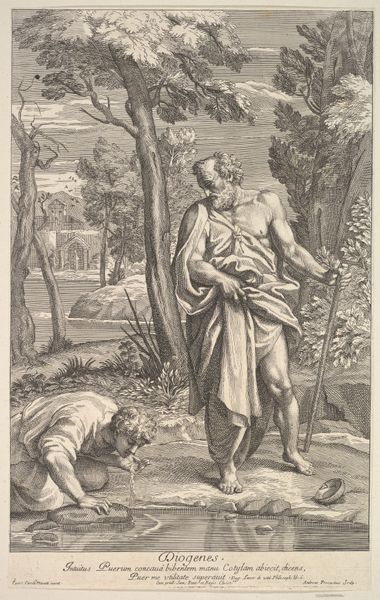
print, engraving
#
narrative-art
# print
#
pen illustration
#
landscape
#
figuration
#
line
#
history-painting
#
academic-art
#
engraving
Dimensions: height 171 mm, width 133 mm
Copyright: Rijks Museum: Open Domain
Editor: This is "Mozes wordt in een biezen mandje in de Nijl gelegd," or "Moses in the Water," an engraving by Simon Fokke, sometime between 1722 and 1784. It feels very staged, almost like a theater production. What strikes you most about this piece? Curator: Well, let’s consider the socio-political climate in which this was made. It's not merely a religious scene; it's a depiction of resistance and survival against oppressive power. What do you make of the landscape surrounding the figures? Editor: It seems very classical, idealized, not necessarily reflecting the reality of the Nile at that time. Curator: Exactly! Fokke employs a common tactic, cloaking contemporary anxieties within historical narratives. Moses' story, a child saved from infanticide, becomes a symbol. We should question whose stories are deemed worthy of preservation. Consider the role of women in this print – they are central to Moses's survival, but what agency do they truly possess? Editor: It's interesting how the print, while seemingly traditional, carries those subtle undercurrents of power and resistance. Curator: The visual language reinforces established hierarchies, even as it gestures toward potential subversion. Does the act of depicting this scene, even within accepted artistic conventions, offer a form of cultural defiance? Editor: So, beyond the immediate narrative, it's a reflection on the anxieties and power dynamics of its own era. Curator: Precisely! And perhaps even a challenge, however subtle, to the established order. Thinking about the figures and how they relate to one another can help to uncover some interesting questions, as well. What did you take away from our conversation? Editor: I now see it's important to view even seemingly straightforward historical depictions through a critical lens, questioning whose perspectives are privileged and what hidden narratives might be lurking beneath the surface.
Comments
No comments
Be the first to comment and join the conversation on the ultimate creative platform.
